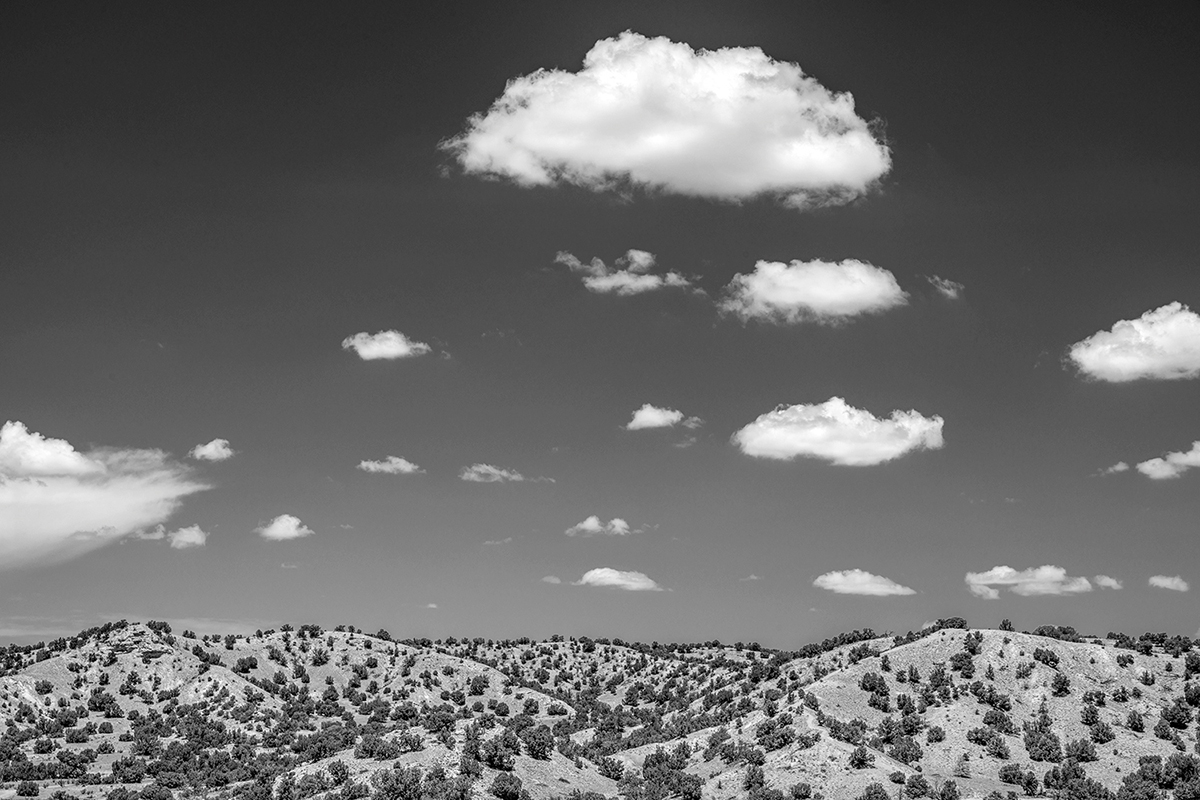Inspired by Ansel
Greg Piazza talks about his upcoming black-and-white exhibit with Adams’ former assistant Alan Ross, with the help of a trio of Tamron lenses.
Share the article:
More Photo Tips | Video Gallery | Photo Gallery | Enewsletter sign-up
By Jenn Gidman
Images by Greg Piazza
“A good photograph is knowing where to stand.” That’s the Ansel Adams quote that served as the inspiration for Greg Piazza and Alan Ross’ exhibit opening Aug. 18 and running through Sept. 29 at the Baker Schorr Fine Art gallery in Midland, Texas. Alan was Adams’ assistant for many years and chosen by him to continue to print his negatives after he died, and he has since become a mentor for and collaborator with Greg.
“One of the largest private collections of Adams’ work is in Midland, owned by a gentleman named David Arrington,” Greg says. “I travel there for work a lot, and I happened to visit the gallery and was talking with the owner. When she found out I work with Alan, she became very excited and came up with the idea of Alan and I doing an exhibit in Midland."
Greg had originally reached out to Alan after finding his work on the Ansel Adams Gallery website and realizing the connection he’d had with the renowned landscape photographer. “Alan was in Santa Fe, which I travel to all the time, so I asked him if he’d take a look at some of my own work,” Greg says. “He offered me some excellent feedback, and from there we started working together more often.”
When the two started brainstorming on what their exhibit in Midland should entail, they initially thought they’d present exclusively Western scenes. Although many of the images in their show are concentrated in that region, the two ultimately decided to focus on the multigenerational mentorship between Adams and Alan, and then between Alan and Greg, as well as on Adams’ theory of how positioning can make or break a photo. “Two steps to the left or right or around the bend and the perspective of your image can completely change,” Greg says. “One second you might not have anything in front of your camera, and then that slight shift can present the most amazing scene.”
Greg has used a Tamron trifecta to create his Ansel-inspired images: the original incarnation of the SP 24-70mm zoom (the F/2.8 VC G2 version is now available); the SP 70-200mm F/2.8 VC G2 telephoto zoom; and the SP 150-600mm VC G2 ultra-telephoto zoom. “The image quality of these lenses is phenomenal,” he says. “I have the 24-70 and 70-200 each attached to two separate cameras, so I don’t have to switch lenses in the field—especially in the desert, where it can get very dusty. The 24-70 is my go-to lens, especially when there are architectural elements in play, while the 70-200 offers me extra reach when I want to zoom in on the details. I started using the 150-600 more last year when I was photographing wildlife in Yellowstone, but I’ve since started also incorporating it into my landscape work.”
Read on for the backstory on some of the images Greg has taken that have been inspired by Alan, Ansel, or both.

24-70mm (24mm), F/13, 1/125 sec., ISO 100
Click image to view larger
Both Alan and Ansel had extensively photographed this church in the ghost town of Canoncito, New Mexico, as have other photographers. I had lodged near there and never even known about it. Our goal was to explore the grounds and see what jumped out at us. I found myself drawn to this scene because of how it merges the landscape with this man-made architecture. I also like how the fence in front of the church perfectly aligns with the two crosses. The sky over the scene, with those cotton-ball clouds, helped complete the photo.
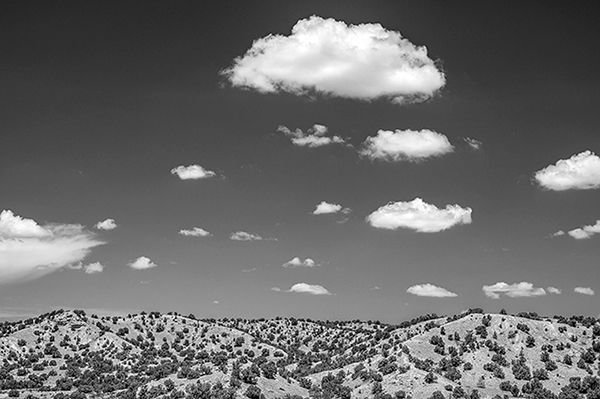
24-70mm (70mm), F/13, 1/80 sec., ISO 64
Click image to view larger
Galisteo in New Mexico is another spot Alan introduced me to. We were there in July—monsoon season—but the whole time we were driving around, there wasn’t a drop of rain. So we ended up just walking around and saw this scene as we headed back to the car. I liked how the round forms of the clouds seemed to mimic the roundness of the hills underneath.
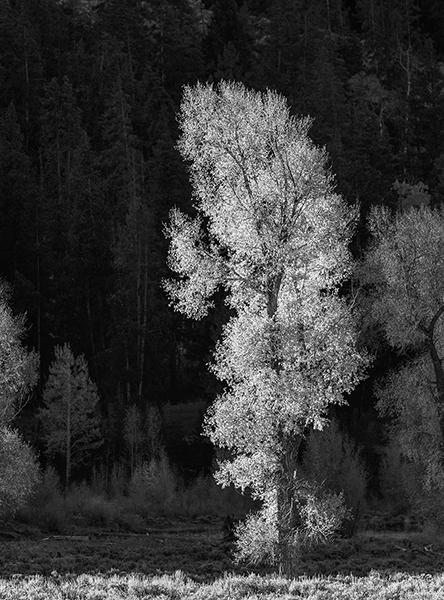
150-600mm (420mm), F/8, 1/60 sec., ISO 64
Click image to view larger
I was enjoying the morning light as I drove through the Lamar Valley. The valley, which cuts through Yellowstone National Park, is often called “America’s Serengeti” for its ample wildlife, including bison, wolves, deer, and bears. As I cruised through on this particular morning, I spotted the sun illuminating a bunch of trees in the distance. I pulled out the 150-600 for this one, as the reach of the lens allowed me to stay on the road and isolate my subjects from a distance, instead of having to hike through the fields to get the shot I wanted.
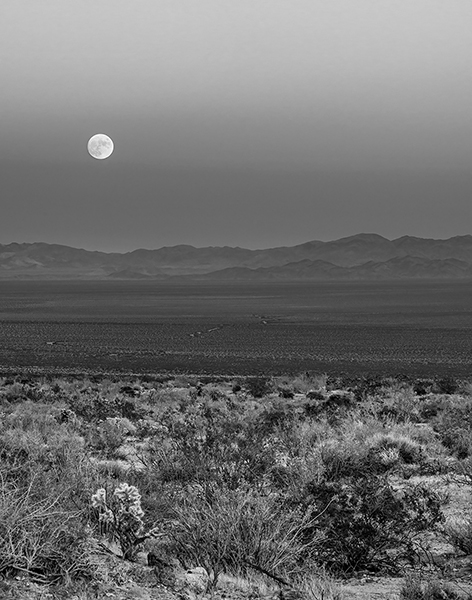
70-200mm (145mm), F/13, 1/40 sec., ISO 800
Click image to view larger
I had to travel near the Hexie Mountains in Joshua Tree National Park for a work conference, and I decided to head out a couple of days early because I knew there’d be a full moon during that time. I took this shot on the first night I was out there. You have to catch the moon early, just as it’s rising—once it gets too high in the sky, the moon is so much brighter than everything else, and it’s hard to get the proper exposure and retain the detail in the moon and in the darkening landscape. I drove out there, stared at the horizon, and waited for the perfect moment. When I showed this photo to Alan, he couldn’t believe how light the foreground was compared to the sky and mountains under the moon. He said he hadn’t ever noticed that in a photo before.
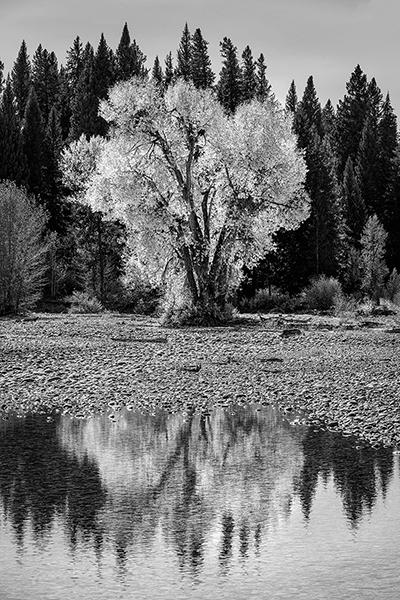
70-200mm (110mm), F/11, 1/80 sec., ISO 200
Click image to view larger
Just down the road from Yellowstone is Pilgrim Creek, in Grand Teton National Park. I’ve driven past this a number of times heading into the park, and most of the times it’s a pretty dry creek bed. That’s why this time when I saw the water I decided to pull over and see if I could find any reflections to photograph. The sun was illuminating this cottonwood tree, which looked stunning against the pines in the background, so there was my shot.
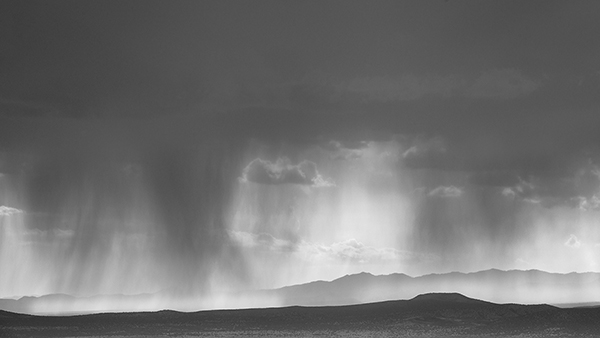
70-200mm (200mm), F/13, 1/50 sec., ISO 64
Click image to view larger
It always astounds and fascinates me to photograph rain from a distance. You can stand in place and take pictures without worrying about you or your equipment getting soaked. It’s fun to watch the bands of water move and how the light changes. I was especially pulled in by the white areas on the bottom of the frame, where the sun was lighting those parts up despite the ominous darkness overhead. The long reach of the 70-200 came in very handy here, as I was taking this photo from the valley, shooting up between two hills.
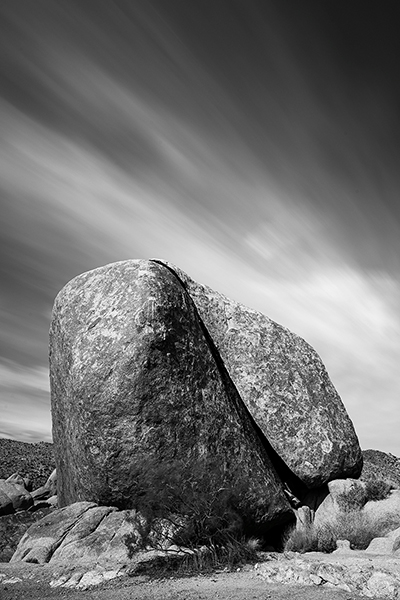
24-70mm (24mm), F/14, 1/30 sec., ISO 64
Click image to view larger
It was extremely windy and cold on the day my wife and I stopped by Split Rock in Joshua Tree National Park. We were walking around the rock, looking for different angles to photograph it from, and this head-on perspective jumped out at us, mainly because of the way the sky was moving behind it. I wanted to focus on the rock as this solid, permanent structure that’s probably been there in the park for millions of years, with the movement I show in the clouds representing the passage of time.
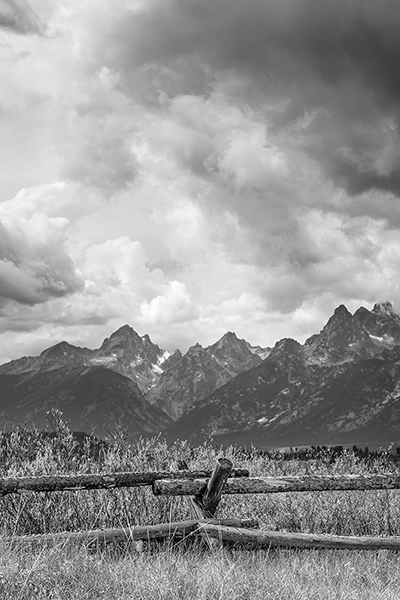
70-200 (200mm), F/11, 1/400 sec., ISO 250
Click image to view larger
This was the second time that I’d been out to the Grand Tetons. The first time I went, it seemed like every day was perfectly clear—not my preference for photos. On this trip, however, there were a lot of fall storms going on. It was amazing to get this kind of cloud action behind the mountains. I also liked the architectural detail of the fence in the foreground. That V-shape in the wood not only leads your eye to the mountains, but it also mimics them with that shape. It drew me into the scene.
To see more of Greg Piazza’s work, check out his website and Instagram.
More Photo Tips | Watch Videos | Learn More About Tamron Lenses | Photo Gallery
